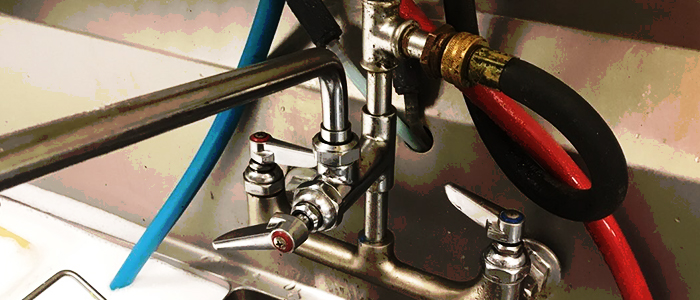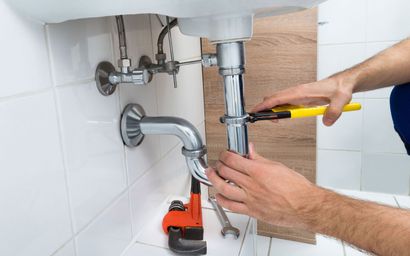How do you actually feel in relation to The Inner Workings of Your Home's Plumbing?

Understanding exactly how your home's plumbing system functions is necessary for every home owner. From delivering clean water for alcohol consumption, cooking, and showering to securely removing wastewater, a properly maintained plumbing system is important for your family members's health and wellness and convenience. In this thorough overview, we'll discover the intricate network that comprises your home's pipes and offer ideas on upkeep, upgrades, and dealing with typical concerns.
Intro
Your home's plumbing system is more than just a network of pipes; it's a complicated system that guarantees you have accessibility to clean water and effective wastewater elimination. Recognizing its components and exactly how they work together can aid you stop costly repair work and make sure every little thing runs smoothly.
Standard Components of a Pipes System
Pipes and Tubes
At the heart of your plumbing system are the pipes and tubes that bring water throughout your home. These can be constructed from various products such as copper, PVC, or PEX, each with its advantages in terms of toughness and cost-effectiveness.
Components: Sinks, Toilets, Showers, and so on.
Fixtures like sinks, toilets, showers, and tubs are where water is made use of in your home. Comprehending just how these components attach to the plumbing system aids in diagnosing troubles and preparing upgrades.
Valves and Shut-off Points
Valves regulate the flow of water in your pipes system. Shut-off shutoffs are vital throughout emergencies or when you require to make repair services, enabling you to separate parts of the system without interrupting water circulation to the entire home.
Supply Of Water System
Key Water Line
The main water line connects your home to the local supply of water or an exclusive well. It's where water enters your home and is dispersed to various fixtures.
Water Meter and Stress Regulatory Authority
The water meter actions your water use, while a pressure regulatory authority ensures that water streams at a risk-free pressure throughout your home's pipes system, preventing damage to pipes and fixtures.
Cold Water vs. Warm water Lines
Recognizing the distinction between cold water lines, which supply water directly from the primary, and hot water lines, which carry warmed water from the hot water heater, aids in repairing and preparing for upgrades.
Drain System
Drain Pipes Water Lines and Traps
Drain pipes bring wastewater away from sinks, showers, and bathrooms to the sewer or septic tank. Catches prevent drain gases from entering your home and additionally catch particles that can trigger blockages.
Ventilation Pipelines
Air flow pipelines allow air into the water drainage system, stopping suction that might slow drainage and trigger traps to vacant. Proper ventilation is crucial for preserving the stability of your pipes system.
Value of Proper Drain
Guaranteeing appropriate drain avoids backups and water damages. On a regular basis cleaning up drains pipes and keeping traps can prevent expensive repairs and expand the life of your plumbing system.
Water Heater
Kinds Of Hot Water Heater
Hot water heater can be tankless or conventional tank-style. Tankless heaters heat water on demand, while storage tanks save heated water for immediate usage.
Updating Your Pipes System
Factors for Upgrading
Updating to water-efficient fixtures or replacing old pipes can enhance water high quality, lower water expenses, and increase the value of your home.
Modern Pipes Technologies and Their Advantages
Discover innovations like smart leakage detectors, water-saving commodes, and energy-efficient hot water heater that can save cash and minimize ecological influence.
Expense Considerations and ROI
Compute the upfront expenses versus lasting financial savings when considering plumbing upgrades. Numerous upgrades spend for themselves via reduced energy costs and fewer repair work.
Just How Water Heaters Link to the Plumbing System
Recognizing just how hot water heater link to both the cold water supply and warm water circulation lines aids in identifying concerns like insufficient hot water or leakages.
Maintenance Tips for Water Heaters
Consistently flushing your water heater to get rid of sediment, examining the temperature settings, and examining for leakages can expand its life-span and boost energy efficiency.
Common Plumbing Issues
Leakages and Their Reasons
Leakages can occur as a result of maturing pipes, loosened installations, or high water stress. Resolving leakages quickly protects against water damages and mold development.
Clogs and Clogs
Obstructions in drains and commodes are frequently caused by flushing non-flushable things or an accumulation of grease and hair. Making use of drain screens and being mindful of what drops your drains can protect against clogs.
Indications of Pipes Problems to Expect
Low tide pressure, slow-moving drains pipes, foul odors, or abnormally high water costs are signs of potential pipes problems that should be addressed promptly.
Pipes Maintenance Tips
Normal Inspections and Checks
Schedule yearly pipes examinations to capture problems early. Seek indicators of leaks, deterioration, or mineral accumulation in taps and showerheads.
Do It Yourself Maintenance Tasks
Straightforward jobs like cleaning faucet aerators, looking for toilet leakages making use of dye tablet computers, or shielding subjected pipes in chilly climates can stop significant plumbing issues.
When to Call a Professional Plumber
Know when a plumbing issue calls for specialist knowledge. Trying intricate fixings without proper knowledge can bring about more damages and greater repair work expenses.
Tips for Reducing Water Use
Easy behaviors like fixing leaks without delay, taking shorter showers, and running full lots of laundry and dishes can preserve water and lower your utility costs.
Eco-Friendly Plumbing Options
Consider sustainable pipes materials like bamboo for floor covering, which is durable and green, or recycled glass for counter tops.
Emergency situation Readiness
Actions to Take During a Pipes Emergency
Know where your shut-off valves are located and exactly how to shut off the water supply in case of a ruptured pipe or significant leakage.
Importance of Having Emergency Calls Convenient
Maintain call info for neighborhood plumbers or emergency solutions easily available for quick reaction throughout a plumbing dilemma.
Ecological Effect and Conservation
Water-Saving Fixtures and Appliances
Setting up low-flow faucets, showerheads, and commodes can considerably decrease water usage without giving up performance.
DIY Emergency Situation Fixes (When Appropriate).
Temporary repairs like utilizing duct tape to spot a leaking pipeline or positioning a bucket under a dripping faucet can reduce damages up until a professional plumber shows up.
Final thought.
Recognizing the makeup of your home's pipes system equips you to keep it efficiently, conserving time and money on repair work. By following routine maintenance regimens and remaining educated concerning contemporary plumbing technologies, you can ensure your pipes system runs efficiently for several years to come.
The Anatomy of Your Home s Plumbing System
Understanding the anatomy of your home s plumbing system is essential for any homeowner. It not only helps in identifying potential issues but also facilitates effective communication with professionals when repairs or upgrades are needed. Your home s plumbing system is more than just pipes and faucets; it s a complex network that ensures the efficient and hygienic flow of water in and out of your house. In this blog, we ll dissect the crucial components of your home s plumbing system. For those in Antelope Valley, Brock Plumbing is your trusted partner for all your plumbing needs, ensuring your system functions smoothly and efficiently.
Water Supply System
Main Water Line: This is where your home s plumbing system begins. The main water line connects your home to the public water supply or a private well. Pipes and Shut-off Valves: Pipes distribute water throughout your home. Shut-off valves are crucial for controlling the flow of water and making repairs without shutting off the entire system. Drainage System
Drain Pipes: These pipes carry waste and water away from sinks, toilets, and showers. Vents: Vents allow sewer gases to escape and help maintain proper pressure in the drainage pipes, ensuring efficient flow of wastewater. Traps: Every fixture has a trap, a U-shaped pipe that holds water and prevents sewer gases from entering your home. The most common is the P-trap under sinks. Fixtures and Appliances
Fixtures and appliances are the most interacted with parts of your plumbing system. They include sinks, toilets, showers, dishwashers, and washing machines. Each fixture and appliance has its own supply and drainage connection, ensuring they receive clean water and can dispose of wastewater effectively.
Water Heating System
Your water heater is a crucial component, providing hot water to various fixtures and appliances in your home. It can be tank-based or tankless, with each type having its own set of advantages and maintenance requirements. Regular maintenance is essential to ensure efficient operation and extend the lifespan of the unit.
Sump Pump
In areas prone to flooding or with high water tables, a sump pump is an essential part of the plumbing system. It s installed in the lowest part of your basement or crawlspace and pumps out water that accumulates, preventing flooding and protecting your home from water damage.
Septic System
Homes that are not connected to a municipal sewer system have a septic system and an underground wastewater treatment structure. Understanding how to maintain your septic system is crucial to prevent backups, odors, and early system failure.
Conclusion
Your home s plumbing system is a complex and essential network, ensuring the efficient and hygienic flow of water in and out of your property. Understanding its key components helps in maintaining it properly and identifying issues before they escalate into major problems. For residents in Antelope Valley, Brock Plumbing is dedicated to providing top-notch services, ensuring that every part of your plumbing system is in perfect working order. Trust our team of professionals to handle all your plumbing needs, ensuring your home remains comfortable, safe, and well-maintained.
https://brockplumbinganddrains.com/blog/the-anatomy-of-your-homes-plumbing-system/

Do you appreciate more info about Exploring Your Homes Plumbing Anatomy? Place a remark further down. We would be delighted to hear your thinking about this article. We hope that you visit us again before long. Loved our piece of writing? Please quickly share it. Help other people find it. Thanks a bunch for being here. Revisit us soon.
Apply Now